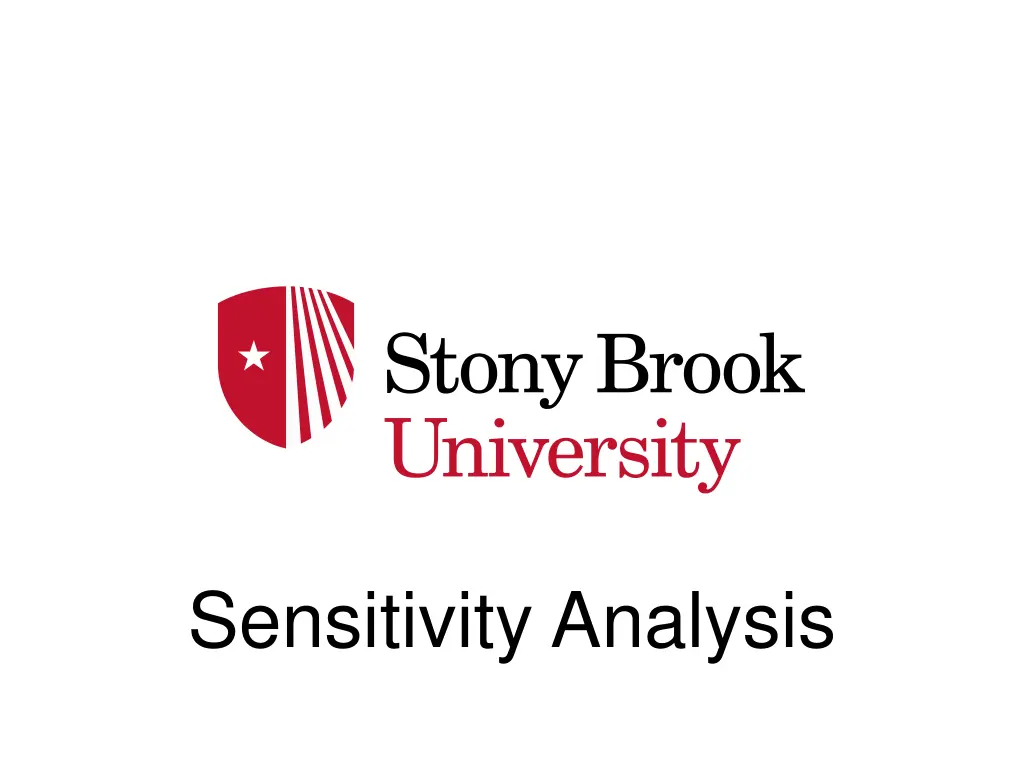
Sensitivity Analysis in Linear Programming
Explore the concept of sensitivity analysis in linear programming to understand how changes in variables impact the optimal solution. Learn about shadow prices, allowable changes, and how to interpret solver sensitivity reports for informed decision-making in optimization problems.
Download Presentation

Please find below an Image/Link to download the presentation.
The content on the website is provided AS IS for your information and personal use only. It may not be sold, licensed, or shared on other websites without obtaining consent from the author. If you encounter any issues during the download, it is possible that the publisher has removed the file from their server.
You are allowed to download the files provided on this website for personal or commercial use, subject to the condition that they are used lawfully. All files are the property of their respective owners.
The content on the website is provided AS IS for your information and personal use only. It may not be sold, licensed, or shared on other websites without obtaining consent from the author.
E N D
Presentation Transcript
We have seen how to formulate and solve a linear program. But life happens and things change. How do changes affect our optimal solution? Our costs Our revenues Our recipes Our package sizes Obviously we can re-solve the LP. However, the simplex method gives us guidance for some what-if questions?
In our problem, we assumed that we had 1000 gallons of each of the four liquids available for production. Suppose we had the opportunity to acquire one more gallon of Liquid C. What is the maximum we would be willing to pay for it? Alternatively, suppose we had the opportunity to sell one gallon of Liquid C. What is the minimum we would be willing to accept for it?
We notice that our current solution DOES NOT USE ALL OF LIQUID C. We have 1000 gallons of Liquid C; we are only using 909 gallons. We say that the Liquid C constraint is nonbinding. We certainly would not want to buy ANY Liquid C; we already have more than we need. But we could sell up to 90 gallons at whatever price we could get for it.
But what if we had the opportunity to buy one more gallon of Liquid N? Our optimal solution uses all 1000 gallons. Therefore, we might be able to increase our profit with that additional gallon. But how much should we be willing to pay? The answer is called the shadow price of Liquid N.
We can find the shadow prices and the allowable changes on the Solver sensitivity report: Variable Cells Final Value Reduced Cost Objective Coefficient Allowable Increase Allowable Decrease 0.285714286 1.333333333 Cell $B$2 Gallons Deicer $C$2 Gallons Solvent 1818.181818 Name 1818.181818 0 0 2 3 1.6 0.5 Constraints Final Value Shadow Price Constraint R.H. Side Allowable Increase Allowable Decrease 90.90909091 Cell $D$7 Liquid C $D$8 Liquid N $D$9 Liquid D $D$10Liquid Q Name 909.0909091 0 1000 1000 1000 1000 1E+30 1000 1000 1.818181818 7.272727273 28.57142857 187.5 125 40 727.2727273 0 1E+30 272.7272727
We see that the shadow price of Liquid N is $1.818 per gallon. This means that we would be willing to purchase up to 28.5 gallons of Liquid N but we should not spend more than $1.81 per gallon (rounding down). We could also sell up to 187 gallons of Liquid N at $1.82 per gallon or more.
Similarly, we would be willing to purchase up to 125 gallons of Liquid D but we should not spend more than $7.27 per gallon (rounding down). Alternatively, we could sell up to 40 gallons of Liquid D at $7.28 or more per gallon (rounding up).
The sensitivity report tells us not to purchase any more Liquid C or Liquid Q. We have more of each than we need. In fact, it tells us that we can sell up to 90.9 gallons of Liquid C and up to 272.7 gallons of Liquid Q. In each case, we should seek the best price we can get.
Each of you has been assigned to a team. Your team manages a company that produces deicer and solvent. This exercise is designed to give you the experience of running a company that produces deicer and solvent. Each team has been given a supply of each of the four liquids.
You need to start by determining how you would use those liquids to produce deicer and solvent. Then we will open a trading period during which you will have the opportunity to buy and sell liquids with other teams. Your objective is to maximize your team s percentage increase in total profit.
Start by solving your linear program to determine your baseline profit what your profit would be if you made no deals. Then develop a strategy to maximize your team s percentage increase in profit through buying and selling liquids. You can do this by communicating with other teams and trying to make deals.






















